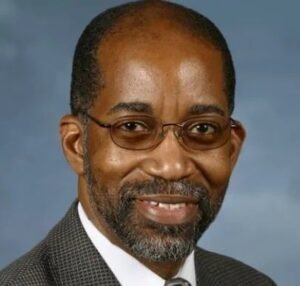Disease Disparities
Black Americans least likely to get recommended amount of sleep
Alaska Natives Face Higher Cancer Rates and Mortality
Racial Disparities in Diverticular Disease Outcomes
Environmental Disparities
Air Pollution’s Mental Health Toll Higher in Redlined Areas
Minorities Face Wider Outdoor Temperature Swings
Air Pollution Drives High Death Rates in Black Americans
Disturbing Health Disparities
Health disparities are differences in the burden of illness, injury, disability, or mortality experienced by one group relative to another. These differences are closely linked with social, economic, or environmental disadvantages.
Source: Kaiser Family Foundation (KFF).
Treatment Disparities
Death Rate Disparities
Cancer Death Rates Decline for Black Men, But Disparities Persist
Race and Place Impact Lifespan Disparities
Unsettling Stories
News about health disparities among Hispanic Americans
Genetic Variant Raises Leukemia Risk in Hispanic Children
Latina Mortality Study Reveals Health Disparities
HIV Crisis Among Latinos Intensifies, Experts Warn
Traffic Crashes Disproportionately Impact Minority Communities
Disparity Disruptors: Individuals Working to Address Health Disparities

Harriet Washington
Highlights historical and ongoing exploitation of African Americans in medical research and healthcare

David Williams
Focuses on impacts of daily discrimination, which contribute to poor health

Lisa Cooper
Enhances patient-physician communication, addresses systemic racism, promotes health equity. systemic racism, promotes health equity

Eraka Bath
Focuses on marginalized youth impacted by foster care and legal system

Paola Gonzalez
Promotes medical Spanish as an essential component of healthcare delivery
News about health disparities among Black Americans
Organ Donation Crisis Disproportionately Impacts Black Americans
Traffic Pollution’s Larger Toll on Minority Women’s Mental Health
Cancer Death Rates Decline for Black Men, But Disparities Persist
Health Disparities Data

Source: Kaiser Family Foundation (KFF) “Key Data on Health and Health Care by Race and Ethnicity” (June 11, 2024)
AI/AN = American Indian/Alaska Native

Source: American Cancer Society Cancer Facts & Figures 2024.
AI/AN = American Indian/Alaska Native; Asian/PI = Asian American and Pacific Islander.
News about health disparities among Asian Americans
- All Post
- news
East Asian Americans Face Higher Risk of Iron-Related Diseases
Racial and Income Gaps Persist in Access to Free Preventive Care
Rural Hawaiʻi Health Gaps Wider for Minorities
Filipino American Children Face Higher Asthma Risk
Heart Disease Risks Vary Among South Asian and East Asian Americans
Study Reveals Faster Aging in Native Hawaiians
More Disparity Disruptors: Individuals Working to Address Health Disparities

David R. Williams
Addresses social determinants, measures discrimination’s impact, promotes health equity

Kizzmekia Corbett
Develops vaccines, advocates for diversity in STEM, mentors future scientists

Sinisa Dovat
Tackles Leukemia Disparities in Hispanic/Latino Children by Focusing on a Crucial Gene

Rhea Boyd
Advocates for health equity, addresses structural racism, promotes social justice

Marcella Nunez-Smith
Promotes health equity, addresses systemic barriers, advocates for marginalized communities
News about health disparities among American Indians and Alaska Natives
- All Post
- news
US fentanyl deaths are declining, but not on this Navajo reservation
Native Americans Face Drastically Shorter Life Expectancy
American Indian and Alaska Native communities have highest smoking rates
Native American Patients Bear Brunt of Government’s Unpaid Medical Bills
American Indians Face Much Higher Heart Failure Risk
Initiatives by groups to address Health Disparities
University of Wisconsin-Milwaukee alumni
Providing tuition, housing, training to prepare physicians to improve health outcomes in Milwaukee’s marginalized communities
University of Colorado
Addressing high rates of childhood obesity among U.S.-born children of Latino immigrant parents
University of Louisville
Addressing systemic health disparities through innovative, scalable solutions with $6.75 million grant from the Humana Foundation
University of Michigan
Investigating underlying causes of maternal and infant health disparities in Flint
University of Florida Health
Training pharmacists to provide medication management and lifestyle counseling to Black patients with uncontrolled hypertension
Prisma Health of South Carolina
Addressing racial disparities in maternal health by providing doulas to Black mothers
U.S. Oncology Network
Addressing patients’ health-related social needs by joining with nation’s largest social services support network
Cedars-Sinai
Joining national study to address cancer disparities in Asian Americans with culturally-tailored interventions to increase cancer screening
Advocate Health Care
Investing $1 billion to build state-of-art hospital and 10 neighborhood care locations on Chicago’s South Side
Montefiore Einstein academic health system in New York City
Providing advanced research training to postgraduate trainees from underrepresented groups in medicine.
American Heart Association
Investing $210+ million in scientific research on health inequities and expanding opportunities for underrepresented groups in science and medicine
American Diabetes Association and CVS Health Foundation
Improving maternal health outcomes for women, especially of color, with gestational diabetes in New York City
Society for Behavioral and Cognitive Neuroscience
Working to ensure presentation of all human brains in scientific studies
American Heart Association
Investing $210+ million in scientific research on health inequities and expanding opportunities for underrepresented groups in science and medicine
Racial Disparities Task Force
Addressing high rates of hypertension-related maternal mortality and illness in U.S. Black women
Bloomberg Philanthropies’ Greenwood Initiative
Boosting historically Black medical schools with $600 million gift
Nashville Black Wellness Collective
Combining physical activities with community building and education within Black community
National Black Church Initiative
Promoting Maternal Outcomes Matter tour to provide educational workshops, health screenings, and support services to African American women
Distant Relatives
Providing crucial health care screening services to those struggling to access quality care in Washington DC
Community Projects, Inc
Encouraging Black prostate cancer survivors and patients to share their personal journeys on social media platforms to dispel myths and reduce stigma
Tulsa’s Healthy Start program
Supporting pregnant women and new mothers to combat maternal mortality rates that disproportionately affect Black women in the state
U.S. Department of Agriculture (USDA)
Establishing 3 Nutrition Hubs to address food and nutrition security challenges in underserved communities in Hawaii, Texas, and Utah
Polk County, Iowa
Starting program to detect dementia early among Latino community
New York’s Erie County Legislature
Launching new Office of Health Equity to address racial disparities
State of Nebraska
Seeking to reverse Black maternal healthcare disparities by improving healthcare infrastructure in underserved areas
Heartland Surrogacy, Iowa’s first surrogacy agency
Addressing critical reproductive health care disparities within Iowa’s Hispanic community.
CaringWire of Columbus, Ohio
Developing advanced analytics tools to predict health risks and outcomes based on social determinants to address potential health issues
CME Outfitters, provider of accredited continuing medical education
Collaborating with National Black Church Initiative to increase diversity in clinical trials and enhance cultural competency among healthcare providers
MyOme and Broad Clinical Labs
Supporting Southern Research Program to bring genetics-driven health insights to Alabama free of charge to address healthcare disparities
More Health Disparities Data

Source: CDC’s “Maternal Mortality Rates in the United States, 2022.”
(2024)
Spotlight on Health Disparities
 In Arizona, English-only school segregation policies, systemic racism and xenophobic laws created stark mental health barriers for state’s Latino students, nearly half the state’s K-12 children. AZ ranks worst in the nation for having enough counselors to serve students.
In Arizona, English-only school segregation policies, systemic racism and xenophobic laws created stark mental health barriers for state’s Latino students, nearly half the state’s K-12 children. AZ ranks worst in the nation for having enough counselors to serve students.
See : “In Arizona, a legacy of English-only education, systemic racism and xenophobic laws create a mental health crisis among Latino students” (April 19, 2024)
 The so-called “Hispanic paradox” of good health began to unravel once researchers started digging deeper into the diverse subgroups within the Hispanic population and found significant differences in cardiovascular risk factors among various Hispanic ethnic groups.
The so-called “Hispanic paradox” of good health began to unravel once researchers started digging deeper into the diverse subgroups within the Hispanic population and found significant differences in cardiovascular risk factors among various Hispanic ethnic groups.
See: “Nearly 50 years after research began, more questions than answers about Hispanic heart health” (October 1, 2024)
 Though Asians comprise 50+ racial and ethnic groups, their health data are often reported as a single “Asian American” category, masking significant disparities in their communities. As a result, Asians are experiencing growing disparities from undiagnosed health conditions.
Though Asians comprise 50+ racial and ethnic groups, their health data are often reported as a single “Asian American” category, masking significant disparities in their communities. As a result, Asians are experiencing growing disparities from undiagnosed health conditions.
See: “Overlooked health issues that ‘need to be addressed’ in Asian communities” (August 27, 2024)
 An average 55-year-old Black man has same biological age as a White man age 68, and a 55-year-old Black woman the same frailty of a White woman who is 75. This gap may explain disparities in economic outcomes such as disability, length of working life, and lifespan.
An average 55-year-old Black man has same biological age as a White man age 68, and a 55-year-old Black woman the same frailty of a White woman who is 75. This gap may explain disparities in economic outcomes such as disability, length of working life, and lifespan.
See: “Health inequality and economic disparities by race, ethnicity, and gender” (October 29, 2024)
 A recent survey of 6,292 U.S. adults revealed that one in three Black women reported negative experiences with healthcare providers that led to worse health outcomes or reluctance to seek future care. Three in five said they brace for potential insults before appointments.
A recent survey of 6,292 U.S. adults revealed that one in three Black women reported negative experiences with healthcare providers that led to worse health outcomes or reluctance to seek future care. Three in five said they brace for potential insults before appointments.
See: “Five Facts About Black Women’s Experiences in Health Care” (May 7, 2024)
 So-called “deaths of despair” in the United States have shifted dramatically from White Americans to middle-age Native Americans, who now have much higher death rates from alcoholism, drug overdoses, and suicide than middle-age Whites.
So-called “deaths of despair” in the United States have shifted dramatically from White Americans to middle-age Native Americans, who now have much higher death rates from alcoholism, drug overdoses, and suicide than middle-age Whites.
See: “Deaths of despair now highest among Black and Indigenous Americans” (April 11, 2024)
Recent reports about health disparities

No Excuse: Inadequate Cervical Cancer Prevention and Care for Black Women in the United States Mississippi Delta
“Mississippi is the state with the highest rate of cervical cancer deaths in the United States. Black women in Mississippi are almost 1.5 times as likely to die of the disease as white women living in the state, despite Black and white women having nearly identical incidence rates. ”

American Cancer Society’s Cancer Facts & Figures 2025
“Compared to White people, Hispanic people have lower incidence for most common cancers (female breast, colorectum, lung and prostate), but 36% higher incidence of cervical cancer and almost 2 times higher incidence of stomach and liver cancer, all of which are largely preventable.”

American Lung Association’s 7th annual “State of Lung Cancer”
“People of color who are diagnosed with lung cancer are less likely to be diagnosed early, less likely to be alive five years after diagnosis, less likely to receive surgical treatment and more likely to receive no treatment.”

March of Dimes’ 2024 Report Card
“The US preterm birth rate remains historically high at 10.4% with significant disparities among racial and ethnic groups…In 2023, the rate of inadequate prenatal care rose to 15.7%, the highest in a decade, with even higher rates among Black and American Indian/Alaska Native communities.”

American Association for Cancer Research’s Cancer Progress Report 2024
“The Report highlights significant advancements in cancer research and treatment, yet underscores persistent health disparities affecting minority communities…Minority communities face higher cancer incidence and mortality rates due to barriers in accessing quality healthcare.”

“Health Coverage Rates Vary Widely Across — and Within — Racial and Ethnic Groups”
“Over 26 million people remain uninsured, and uninsured rates vary substantially between racial and ethnic groups. There’s even wider uninsured rate variation among the many racial and ethnic subgroups within the larger categories.”
News about pressing issues in health disparities
More diversity needed in clinical trials

Health Disparities Worsened by Clinical Trial Underrepresentation
Racial Disparities Persist in Gynecologic Cancer Trials
Real-World Data Key to Boosting Diversity in Clinical Trials
Lack of Diversity in Respiratory Trials Hinders Care
Cancer Trials Exclude Many African, Middle Eastern Patients
Do algorithms, Artificial Intelligence (AI), or race-based adjustments reduce or worsen health disparities?

Boston Children’s Hospital Stops Using Race in Medical Rules
Study Reveals Racial Bias in Medical Testing Skews AI Models
Study Reveals Racial Bias in Doctors’ Medical Records
Health Algorithms Both Help and Hurt Racial Disparities
Maternal health disparities need urgent attention

California Faces Challenges in Maternal Health for Black Mothers
Repeat C-Sections Riskier for Black, Latinx Mothers
Black Mothers Face Higher Mortality Rates Despite Education
Study Challenges CDC Data on Maternal Death Rates
Black Maternal Mortality Rate Remains Alarmingly High
Maternal Obesity and Genetic Ancestry Impact Birth Outcomes
Study Reveals Disparities in Pregnancy Outcomes for Women with MS
Health disparities affect organ donation and transplants



































